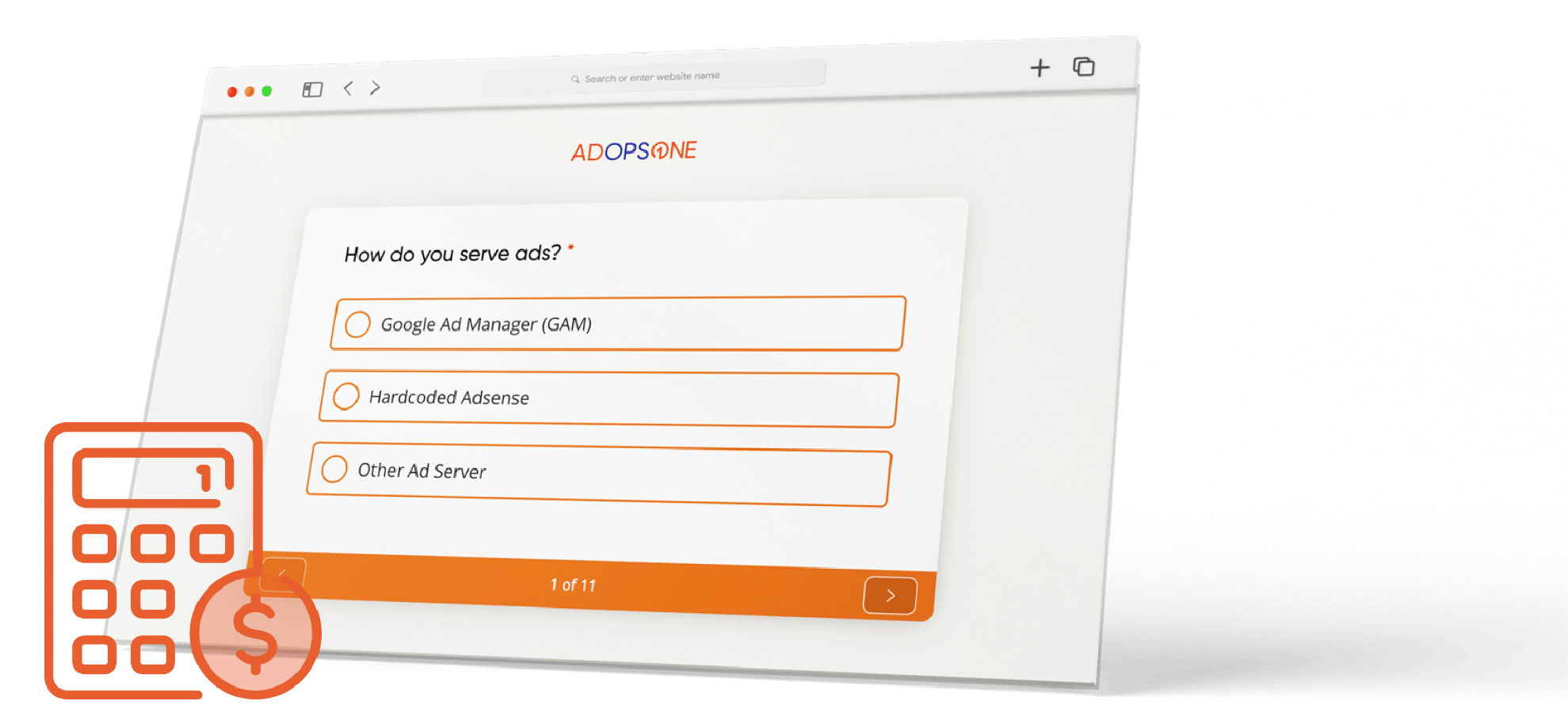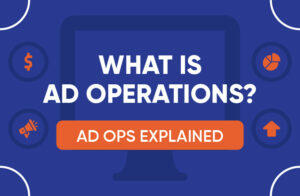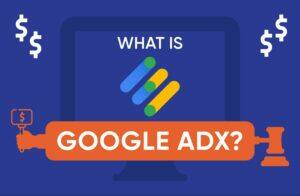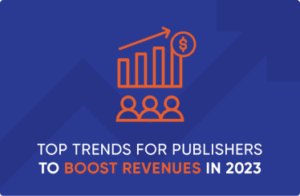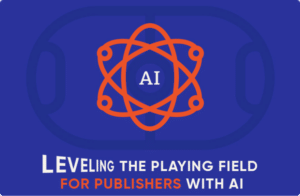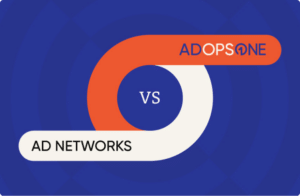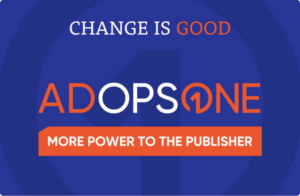Anyone who’s been around the digital publishing block will likely have heard of Google AdSense and Google Ad Exchange (AdX) more times than they can remember.
And for good reason.
Google rules the roost when it comes to digital advertising, commanding more than 28% share of global digital ad revenue. And a good chunk of that revenue comes from its two flagship offerings—AdSense and AdX.
But for the uninitiated they may look alike—they’re both ad monetization, right? In actual fact, they serve different roles and audiences. AdSense was designed to help smaller publishers and bloggers monetize their content. AdX, accessed via Google Ad Manager (GAM), is a more complex and powerful tool for large publishers.
These are quite simple definitions, but don’t worry, we’re going to explore each in more detail to better understand how they work, their specific purpose, and how publishers can zero in on which is better for their needs.
Table of Contents
What Is Google AdSense?
AdSense is a free ad platform that allows digital publishers to monetize their content by selling ad space to advertisers. Publishers earn money by selling ad inventory using the cost per mille (CPM) or a cost per click (CPC) models.
Google originally launched the platform in 2003 under the rather unimaginative moniker Content Targeting Advertising. Within weeks of the launch, however, the search giant had acquired a competitor product called AdSense and rebranded its own offering to match.
Today, AdSense is used by publishers of all sizes, thanks to it being a simple and hassle-free way to generate ad revenue. Publishers can hard-code AdSense tags directly onto their websites, without the need for a linked Google Ad Manager (GAM) account.
How Does Google AdSense Work?
Google AdSense serves as an intermediary between publishers and advertisers, simplifying the process of managing ads.
AdSense ads displayed on a publisher’s site are served from the Google Display Network (GDN). Advertisers, meanwhile, create ad campaigns in Google Ads and bid on keywords relevant to their ads, which determines the ad spaces where their ads are displayed.
AdSense matches these ads with the most contextually relevant content on a publisher’s website to ensure that a reader only sees the most suitable ads.
As mentioned above, the program uses the CPC or CPM models. Website owners earn revenue when visitors interact with the ads, either by clicking on them or when the ads are displayed. The ad revenue is shared between the publisher and Google.
AdSense pays publishers 68% of the total ad revenue for display ads and 51% of the revenue generated through the AdSense for Search (AFS) product.
What Is Google AdX?
Google AdX, previously dubbed DoubleClick Ad Exchange, is an ad exchange network and programmatic advertising platform. It is one of the most widely used advertising platforms worldwide, with the US Justice Department alleging that the platform has a greater than 50% market share.
Publishers that are growing rapidly and are looking to optimize their monetization strategies should consider leveraging Google Ad Exchange. It allows eligible publishers to access a larger pool of demand through campaigns from premium brands and advertisers globally. Greater demand means heightened competition in bidding, leading to improved ad revenue.
AdX delivers audience-targeted ads from Display & Video 360 (DV360), which is Google’s demand-side platform (DSP), alongside other global DSPs such as The Trade Desk, Criteo, Adelphic, Adform, etc.
In contrast to AdSense, which only shows ads from GDN, AdX allows all advertisers, irrespective of the technology they use, to bid on available inventory. Again, more competition means better revenue for publishers.
For a long time, AdX access was restricted for publishers who:
-
- had valid GAM accounts, and
-
- had at least 5 million monthly page views in the preceding 6 months.
While the GAM mandate still stands, Google has scrapped its page view restrictions. This is, however, conditional on the publisher applying for AdX via a Google Certified Publishing Partner such as Affinity–AdOpsOne’s parent company.
How Does Google AdX Work?
AdX uses real-time bidding (RTB) technology to facilitate the buying and selling of ad impressions.
After signing up for AdX, publishers are provided with code to integrate into their websites or mobile apps that allows the platform to access their ad inventory. Users manage and optimize their Google Ad Exchange account through Google Ad Manager (GAM).
There are three kinds of auctions on AdX:
-
- Open auction: In an open auction, advertisers bid in real-time for available ad impressions. The highest bidder wins the chance to display their ad.
-
- Private auction: In a private auction, publishers offer a select number of ad impressions to a specific group of advertisers who have been invited to participate. Advertisers bid against each other, and the highest bidder wins the ad impression.
-
- Preferred deals: These allow publishers to make deals with specific advertisers on a fixed-rate basis. This grants publishers more control over their ad inventory and allows them to secure premium ad placements with preferred advertisers.
When a user visits a web page or uses an app that is part of the AdX network, an ad request is sent to the ad server. The ad server analyzes the user’s profile, the available ad inventory, and the bids received from advertisers. It then selects the most relevant ad and delivers it to the user’s device.
Google AdSense vs. Google AdX: What’s the Difference?
Both platforms serve different purposes and target different types of publishers. Here’s the complete lowdown on AdSense vs. AdX:
Accessibility
AdSense has relatively low entry barriers in terms of minimum traffic or page views required. This makes it accessible to most publishers, including smaller websites and blogs.
AdX is more exclusive and typically caters to larger publishers with high-quality content and significant traffic. Publishers need to meet certain eligibility criteria to gain access to the exchange.
AdX is also complex to operate, and often requires a dedicated Google account manager handling day-to-day operations and ad campaign monitoring.
Account Type
AdSense can be accessed with a regular Google account, while AdX requires a separate Google Ad Manager account, which offers more advanced ad management features.
Ad Formats
AdSense offers various ad formats, including display ads, native ads, and search ads. In addition to these ad formats AdX also supports in-stream ads, interstitial ads, rewarded ads, and app open ads.
Ad Management
AdSense is a self-serve platform that allows publishers to easily set up and manage their ad inventory. Publishers only need to embed Google’s ad tags in their website’s HTML code to get started.
AdX is accessible via Google Ad Manager (GAM), a comprehensive ad management platform that integrates various ad networks and demand partners, including AdSense, to provide access to a wide range of advertisers.
AdX offers more advanced ad management capabilities, including access to real-time bidding (RTB), demand-side platforms (DSPs), and the ability to work with multiple advertisers simultaneously. Publishers can also set minimum bid prices, block specific ads or categories, and prioritize certain advertisers or even an ad network.
Publisher Support
AdSense offers a basic level of customer support through its help center, online resources, and forums. AdX, on the other hand, provides a dedicated account manager to assist with ad setup, optimization, and troubleshooting.
Revenue Potential
AdSense operates on a cost per click (CPC) or cost per mille (CPM) revenue model, with publishers earning money for every click or thousand impressions respectively. Publishers receive 68% of the revenue generated from display ads and 51% for AdSense for Search (AFS) ads.
AdX caters to larger publishers and offers a more sophisticated and advanced monetization model. AdX uses RTB, where advertisers bid for ad space in real-time auctions. Publishers earn revenue from the highest bidding advertiser. The increased competition and advanced bidding algorithms deployed by AdX typically translates into better monetizing potential for publishers.
Target Audience
Given its simplicity, AdSense is suitable for individual publishers, small to medium-sized websites, and blogs. AdX is designed for larger publishers, such as news websites or online magazines, with high traffic volumes and the ability to attract more advertisers.
While smaller publishers are unlikely to be approved for direct access to AdX, it’s still possible to get an account by teaming up with a Google Certified Publishing Partner.
Google AdSense vs. Google AdX: Which Is Better?
A comparison such as Google AdX vs AdSense is ultimately highly subjective. A lot depends on a publisher’s needs and capabilities.
At the end of the day, the Google AdX vs Google AdSense debate boils down to a handful of variables—a publisher’s monetization strategy, the scale of their publishing operation, and the resources at their disposal.
For smaller publishers with less traffic, AdSense provides an accessible and user-friendly solution. On the other hand, for larger publishers with high-quality content and significant traffic, AdX offers more advanced features, access to premium advertisers, and the potential for higher ad revenue.
Final Thoughts
While both Google AdX and AdSense offer publishers the chance to make money with ads, AdX is the more advanced platform. It features more powerful features, publisher controls, and greater monetization potential.
Leveraging AdX, however, requires publishers to have a GAM account, which in turn demands considerable investment in terms of time and resources. While Google has made it clear that AdX was designed for large publishers, smaller publishers can still enjoy its benefits by teaming up with a Google Certified Publishing Partner.
AdOpsOne has proven expertise in helping GAM publishers optimize their ad ops. We provide Managed Services that take care of all the grunt work of setting up, running, and constantly monitoring a GAM account.
The AdOpsOne Dashboard simplifies complex GAM reporting for publishers by pulling data from GAM, Google Analytics, and multiple demand partners before aggregating it into a unified, simple view.
The result—publishing partners have seen increases in their eCPMs ranging from 30-300%.
For publishers looking to maximize their ad revenue, AdOpsOne’s various products provide AI-powered ad operations assistance for publishers using GAM. Contact us to find out more.
Google AdSense vs Google AdX—FAQs
Is Google AdX Better than AdSense?
Deciding if AdX is better than AdSense depends on a publisher’s requirements, resources, and usage. While AdX is more advanced, powerful, and complex than AdSense, it also requires more resources and has a higher entry barrier.
AdSense, on the other hand, is accessible even to small and entry-level publishers, as long as they meet the AdSense Program policies.
Is Google AdX the Same as Google Ad Manager?
While Google AdX is accessible via Google Ad Manager (GAM), they serve different roles. AdX is an ad exchange for large publishers to sell their ad space to multiple advertisers, including premium brands.
GAM, meanwhile, is a comprehensive ad management platform that combines the functionalities of an ad server and an ad exchange. It allows publishers to manage their ad inventory, choose from multiple advertising networks, and maximize their revenue by serving high quality ads from various demand sources.
What Is the Take Rate of Google AdX?
The take rate of Google AdX refers to the percentage of ad revenue that Google retains from the transactions that occur on its ad exchange platform. This varies depending on a number of factors, including the type of ad, the publisher’s demand, and the competition in the auction.
Can You Monetize Your Website Without AdSense?
Yes, there are several ways to monetize a website without using AdSense. Some alternatives include affiliate marketing, sponsored content, selling digital products, offering premium content, etc.
There are also multiple advertising networks available for monetizing your website apart from AdSense. Ezoic, Mediavine, Taboola, Adcash, etc., are some popular AdSense alternatives.

